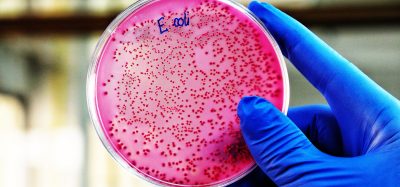Increased persister cells production leads to antibiotic resistance
Posted: 15 January 2024 | Drug Target Review | No comments yet
Using clinical E. coli bacteraemia isolates, researchers found that high-persister mutants evolved which contributed to antibiotic failure.

Researchers from the UNC School of Medicine and the Duke School of Medicine have demonstrated that Escherichia coli (E. coli) can evolve in patients to produce increased persister cells, which leads to their increased survival to antibiotics.
Although antibiotic overuse can result in antibiotic resistance, classic antibiotic resistance might not completely explain why antibiotics sometimes fail. Persister cells, sub-populations of bacteria, can survive in the presence of lethal doses of antibiotics for prolonged periods. Persister cells have been intensively researched but evidence linking them to poor patient outcomes has been limited.
The scientists were led by Dr Brian Conlon, UNC School of Medicine microbiologist and Dr Josh Parsons, Infectious Diseases Fellow from the Duke School of Medicine. To show that persister cells contribute to antibiotic failure when classic antibiotic resistance cannot explain it, the team used a combination of patient data, clinical isolates and animal models.
Dr Conlon stated: “For decades, many scientists around the world have studied persister formation, and we have continually been challenged to provide evidence for real-world importance…We think our paper is the strongest evidence supporting the importance of persister cells in the clinic.”
An overuse of antibiotics, particularly when doctors are uncertain to whether a patient has a bacterial infection, makes antibiotics less effective and leads to antibiotic resistance. However, some researchers have long thought antibiotic failure might not be that simple and that additional factors are required to understand antibiotic treatment failure, especially where antibiotic resistance is not identified.
Despite much scientific literature on the subject, Dr Conlon said it remained unclear how much, if at all, this persister phenomenon contributed to antibiotic treatment failure in the clinic. However, the team used clinical E. coli bacteraemia isolates and discovered that high-persister mutants evolved in patients. They then documented a 100-fold increase in persisters in one mutant when challenged with the exact antibiotic doctors had used to treat patient from which the E. coli had been isolated.
In a mouse infection model, the mutant bacteria showed no loss of fitness and displayed a 10-fold increase in survival following antibiotic challenge.
Dr Conlon noted that his team documented the infections and treatment protocols of patients who had been prescribed antibiotics to clear E. coli infections, and that in patients who did not clear infection with antibiotics, classical antibiotic resistance was not responsible for the poor outcomes.
He further explained: “Because of this research, we think persister formation is likely a significant contributor to antibiotic treatment failure in patients…Our research strongly suggests that persister formation is an important metric to consider when treating patients with antibiotics.”
Scientists should develop techniques to identify mutants that are likely to respond poorly to antibiotics, Dr Conlon added, because this information would influence treatment choices or duration of treatment. The development of novel therapeutic approaches to target and kill persisters could improve patients’ treatment outcomes.
This study was published in the Proceedings of the National Academy of Sciences (PNAS)
Related topics
Animal Models, Antibiotics
Related conditions
antibiotic resistance, E coli
Related organisations
Duke School of Medicine, UNC School of Medicine






